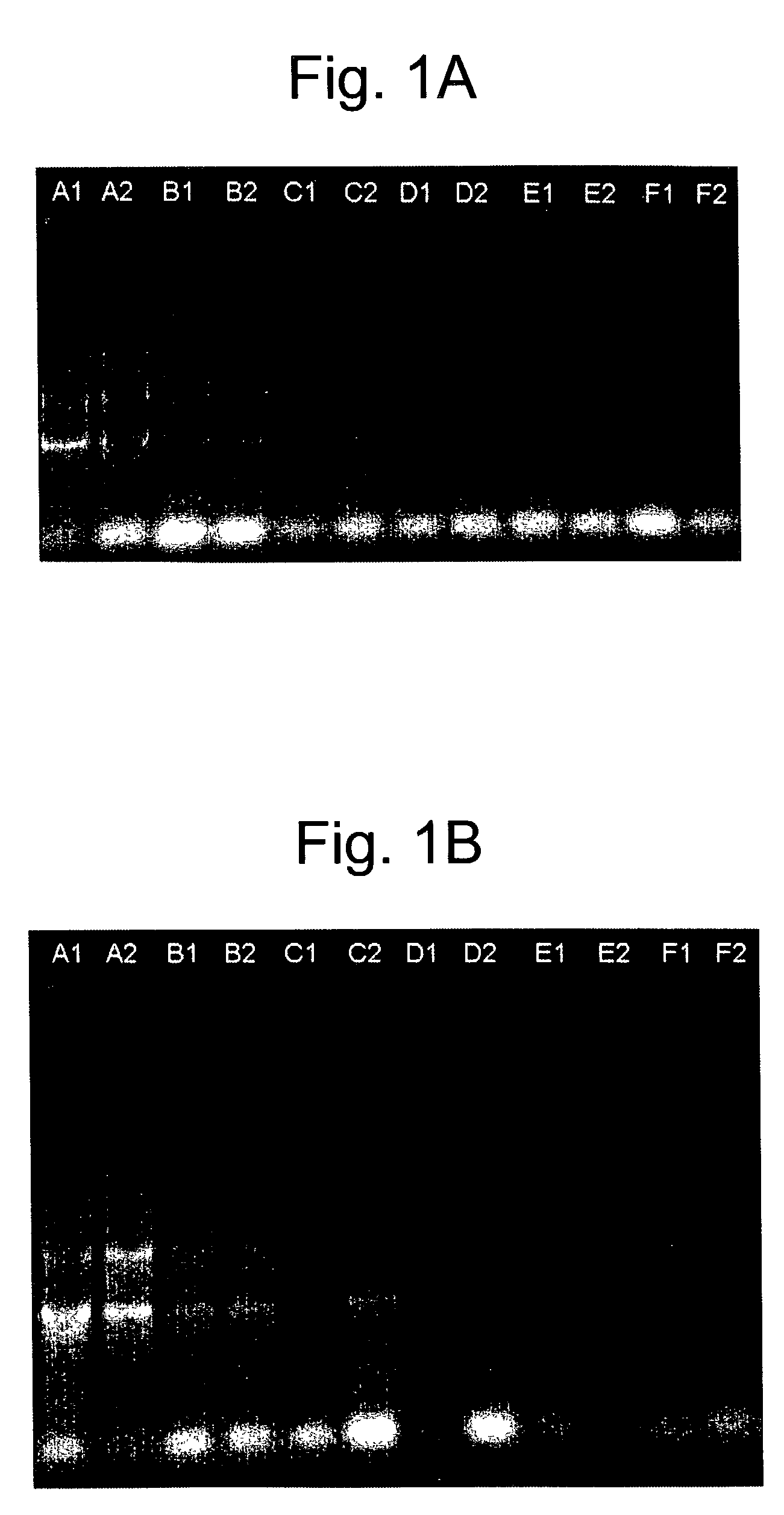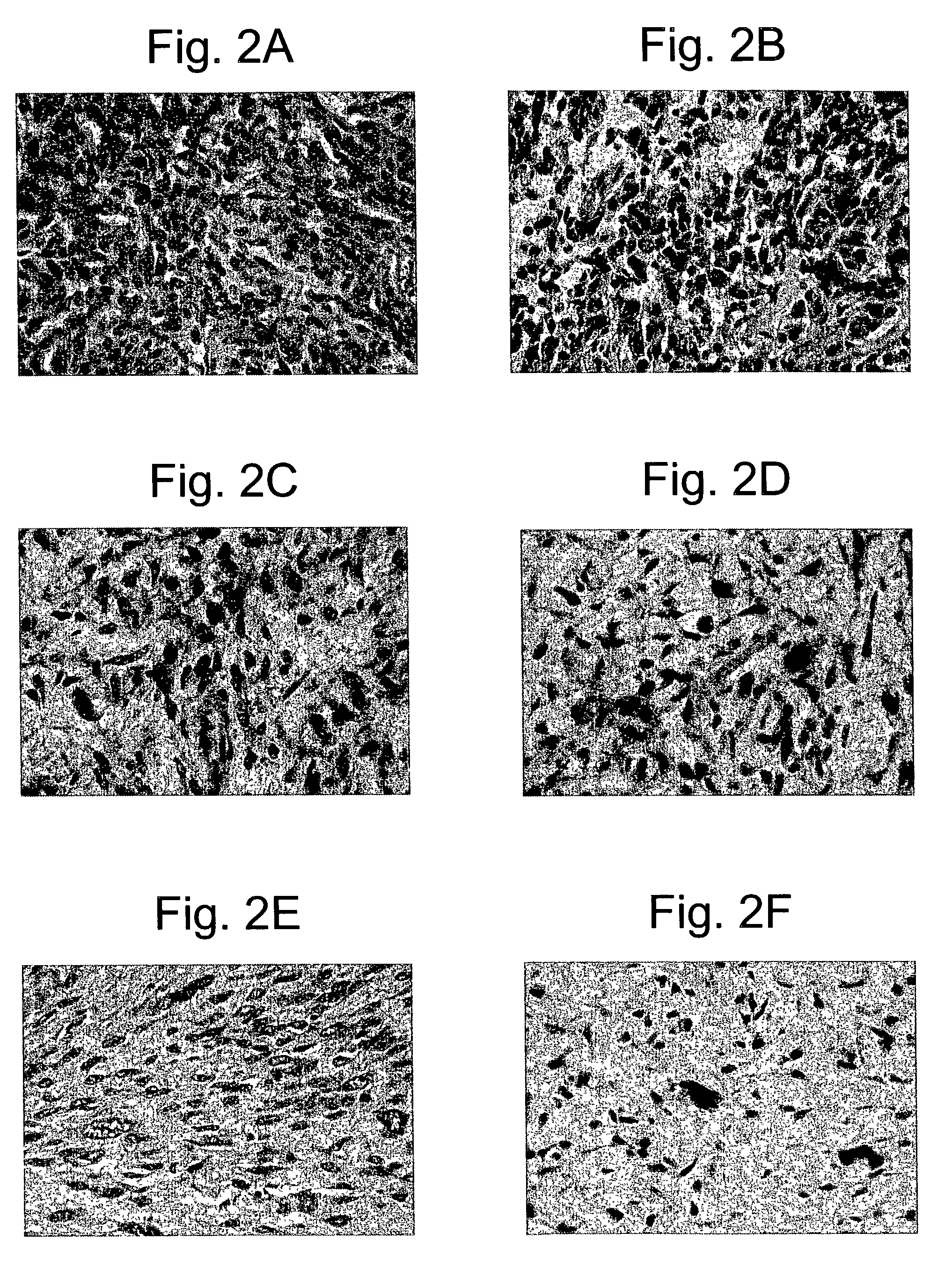Preservation of RNA and morphology in cells and tissues
a technology of morphology and rna, which is applied in the field of preservation of rna and morphology in cells and tissues, can solve the problems of limiting the usefulness of genetic techniques for diagnosis and research applications, and reducing their yield, so as to achieve enhanced antibody binding and complementary probe hybridization, the effect of preservation of morphology
- Summary
- Abstract
- Description
- Claims
- Application Information
AI Technical Summary
Benefits of technology
Problems solved by technology
Method used
Image
Examples
examples 1
[0055]DNA was extracted from tissue sections after preservation in different solutions (e.g., 10% polyethylene glycol 300 and 90% methanol) using an AquaPure Genomic DNA Isolation kit (Bio-Rad Laboratories) as follows:
[0056]Twenty mg of freshly minced mouse liver tissue or the same tissue preserved in 10% PEG / 90% methanol was placed in a 1.5 ml microfuge tube containing 300 μl lysis solution. 1.5 μl of Proteinase K solution (20 mg / ml) was added to the lysate and mixed by inverting following by overnight incubation at 55° C. To the lysate, 1.5 μl of RNAse A solution (4 mg / ml) was added, mixed gently and incubated at 37° C. for 60 min. Samples were cooled to room temperature and 100 μl of protein precipitation solution was added. Samples were vortexed for 20 sec and then centrifuged at 16000 g for 3 min. Supernaturant containing DNA was transferred to a fresh tube and precipitated with 300 μl of 100% isopropanol. Samples were mixed and centrifuged at 16000 g for one min....
example 2
[0061]RNA was extracted from tissue sections after preservation in different solutions (e.g., 10% polyethylene glycol 300 and 90% methanol) using a Trizol RNA Isolation kit (Gibco BRL) as follows:
[0062]Fifty mg of fresh tissue or the same tissue preserved in 10% PEG / 90% methanol was placed in about one ml of Trizol reagent and disrupted using a Polytron homogenizer. Samples were incubated at room temperature for 5 min and 0.2 ml of chloroform was added followed by hand mixing for 15 sec. Samples were centrifuged at 12000 g for 15 min at 5° C. Aqueous phase was removed and precipitated using 0.5 ml of isopropyl alcohol. Following 10 min incubation at room temperature, samples were cooled to 5° C. and centrifuged at 12000 g for 10 min. The RNA pellet was washed in 70% ethanol, air dried for 15 min, and dissolved in 100 μl of ribonuclease-free H2O. The amount of RNA extracted was determined by UV spectrophotometry. Its quality was assessed by separating the RNA on a denat...
example 3
Detection of Antigen in Tissue Sections
[0063]As taught in U.S. Pat. No. 6,207,408, immunohistochemistry can be performed on tissue sections after fresh tissues were processed. In comparison, immunohistochemistry performed after preservation in different solutions (e.g., 10% polyethylene glycol 300 and 90% methanol) and then processed in accordance with U.S. Pat. No. 6,207,408. Results were compared to preserved tissue processed by conventional methods.
[0064]Uterine leiomyoma, malignant melanoma, pyelonephritis of kidney, and normal liver were studied. The following antibodies were used: epithelial markers (e.g., wide-spectrum cytokeratin, cytokeratin 7, epithelial membrane antigen); melanocyte markers (e.g., S100 protein, Melan A, tyrosinase, HMB-45); nuclear antigens (e.g., estrogen and progesterone receptors, Ki-67); leukocyte antigens (e.g., CD45, CD68, CD31); muscle markers (e.g., desmin, cladesmon, muscle actin); endothelial markers (e.g., Factor VIII related antigen, CD31); an...
PUM
 Login to View More
Login to View More Abstract
Description
Claims
Application Information
 Login to View More
Login to View More - R&D
- Intellectual Property
- Life Sciences
- Materials
- Tech Scout
- Unparalleled Data Quality
- Higher Quality Content
- 60% Fewer Hallucinations
Browse by: Latest US Patents, China's latest patents, Technical Efficacy Thesaurus, Application Domain, Technology Topic, Popular Technical Reports.
© 2025 PatSnap. All rights reserved.Legal|Privacy policy|Modern Slavery Act Transparency Statement|Sitemap|About US| Contact US: help@patsnap.com


